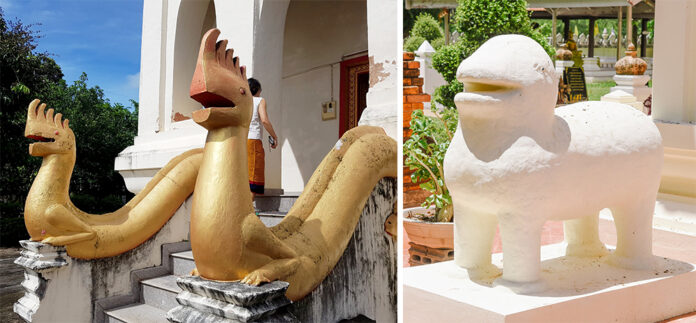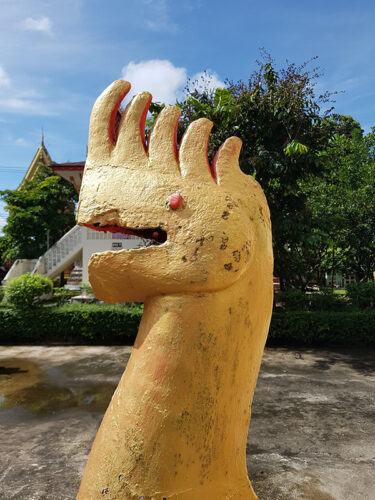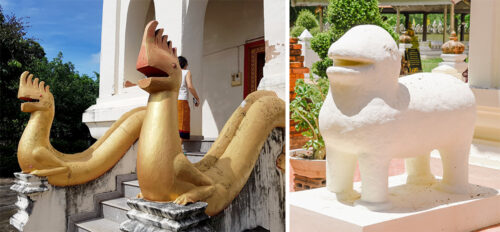
KHON KAEN — While Chinese dragons inspire awe and Greek centaurs represent mysterious wisdom for centuries, Thai mythical creatures have the power to make the internet squeal.
Photos of awkward-looking statues of little known magical beasts in some rural temples have been making rounds on social media over the weekend. The most popular of them appears to be a sculpture of a tua mom, a four-legged creature in Lanna folklore that was supposed to look like a mix of dragon and lion – but it ended up looking more like a duck, or a badly shaped dinosaur.
Phra Kru Sootta, the abbot of the temple where the viral photo of tua mom was taken, said he welcomed the sudden online fame. The monk said he just received a call from a gift shop owner in Bangkok who said that she would make tua mom souvenirs and donate some of the proceeds to the temple.
“I feel happy that people are interested and calling in about it,” Phra Kru Sootta of Wat Prathat Kham Kaen said by phone.
He also acknowledged that the sculpture of tua mom at his temple does look a bit strange.
“Usually, in the north and northeast, tua mom will have the head of a dragon and the body of a lion,” the abbot explained. “But this one here has the body of a lion, and a duck’s head. Some people told me it looks like a dolphin’s head!”
Thanks to tua mom, several other sculptures are also getting a lot of attention on social media, like a pair of golden Naga-like creatures on the steps of Wat Chaiyaphum in Ubon Ratchathani.
In fact, as many netizens have now learned, they are hera, a half-crocodile, half-Naga reputed to be guardians of the mythical Himmapan Forest. According to Isaan Lanxang History, the heras at Wat Chaiyaphum were built in 1897 by local artists without formal training – a sort of local naive art.

“The hera were made in a simple style, stripped of unnecessary things, leaving only a pure beauty, without scales or feathers like how court artists would do it,” the Facebook page wrote. “Local artists created it with their faith in Buddhism.”
Traditional Buddhist art has long suffered from a lack of popularity among the younger generations – but many online artists are now drawing fanart of tua moms and heras, and sharing them under the hashtag #HimmapanMarshmallow in tribute to the internet sensation.
They also earn the internet nickname of “nonnnnnnnnnn,” an endearing diminutive of the term nong. Here’s some examples of the fanarts of the creatures:
we bare bears(?) #หิมพานต์มาร์ชเมลโล่ pic.twitter.com/2KCIhsWfoZ
— ด.ช.ที 🍼✨ (@2004ttw) December 4, 2020

